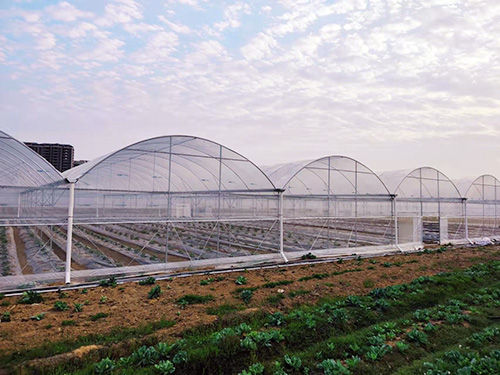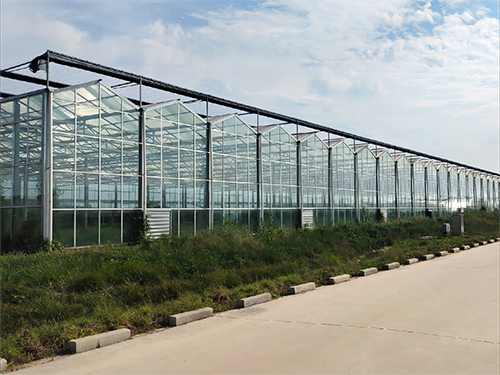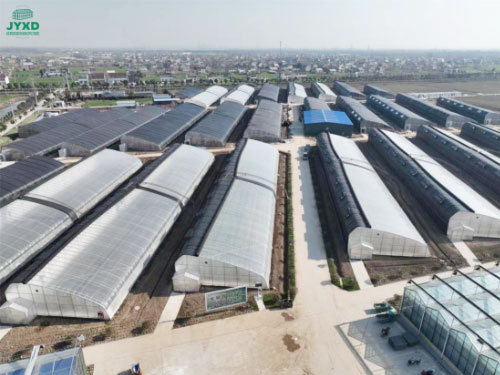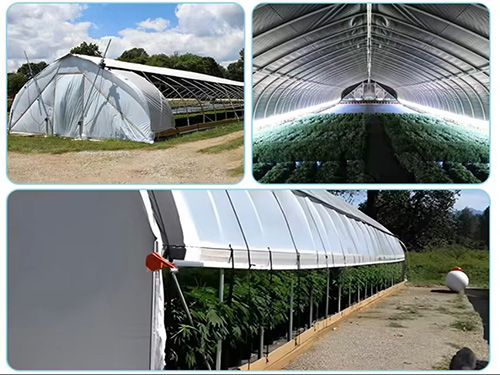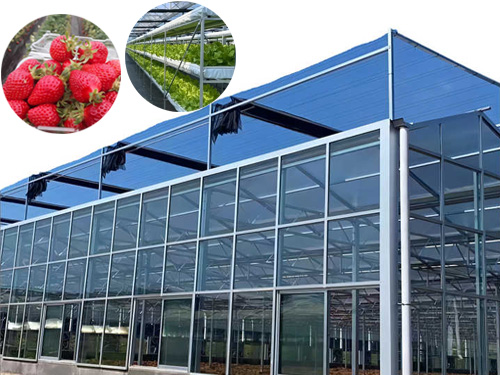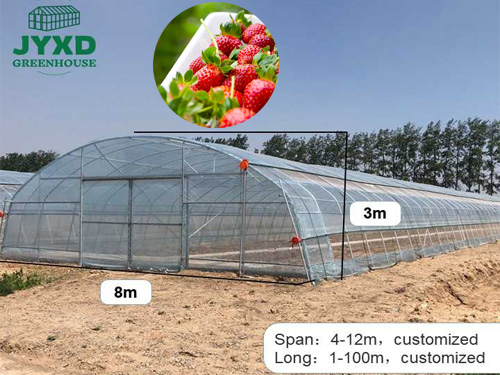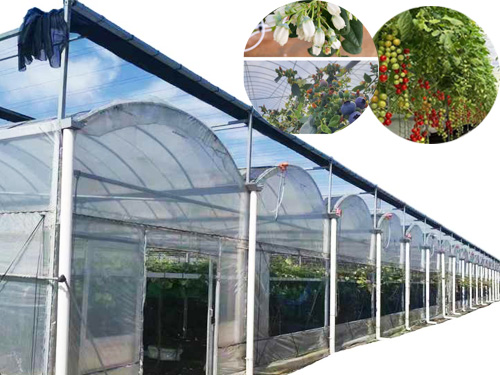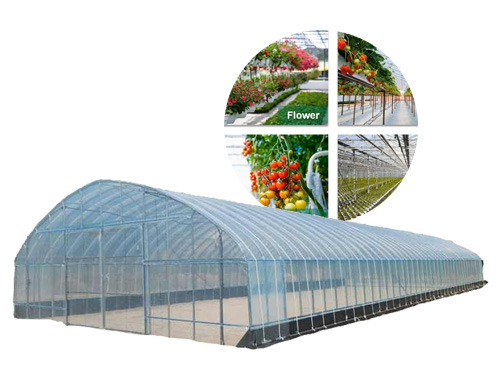NEWS DETAILS
NEWS INFORMATION
What are the measures to keep a greenhouse warm and cold-proof in winter?
AUTHOR:jyxd-greenhouse DATE:2024-04-02 11:01:06 HITS:150
1. The structure and direction of the greenhouse are the most critical
Most greenhouses are arc-shaped. The best orientation of the greenhouse is to face north and south, and east-west orientation is better. In winter, it can fully receive sunlight and increase the temperature inside the greenhouse. It is also conducive to ventilation, reducing humidity in the shed and reducing pests and diseases. The size of the shed is preferably an 8-meter standard shed, and the length of the shed should not exceed 45 meters. In the structure of the greenhouse, the spacing between steel pipes is preferably 80 cm, and the spacing should not be too wide, otherwise the greenhouse film will be easily blown off by the wind. If it is a multi-span greenhouse, it is required to install drainage ditches at the multi-span location to prevent rainwater from dripping into the shed from the multi-span location on rainy days, increasing the humidity in the shed and lowering the temperature inside the shed. When building a greenhouse, the most taboo thing is to cut corners. In the structure of the greenhouse, the distance between steel pipes cannot be greater than one meter. If the distance between the steel pipes exceeds one meter, it is easy to cause the greenhouse membrane to be blown up and down in waves, or even blown away by strong winds, failing to provide the best insulation and cold protection. Minimum requirements.
2. Cover the inner membrane
For a greenhouse with a width of 8 meters, if the greenhouse is relatively high, it is recommended to cover it with an inner film. The distance between the inner membrane and the outer membrane is preferably more than 25cm, which ensures air isolation between the inner membrane and the outer membrane, reduces air convection and insulates heat loss. The disadvantage of a capped inner membrane is that the inner temperature of the inner membrane is high and the outer temperature is low. Due to the existence of temperature differences, water droplets are easily formed in the inner membrane, which increases the humidity in the greenhouse and increases the incidence of vegetables in the greenhouse.
3. Covered with non-woven fabric
Compared with covering with an inner film, this measure can significantly reduce the humidity in the greenhouse and effectively reduce the occurrence of diseases. At the same time, the non-woven fabric has an obvious thermal insulation effect and can increase the temperature of the greenhouse by 3-5°C. The insulation effect is good. Since non-woven fabrics are easy to pull and manage, they bring a lot of convenience to greenhouse management. Please note: it is best to hang non-woven fabrics around the perimeter of the greenhouse.
4. Use heating equipment such as heaters, air conditioners, and radiators
Where conditions permit, you can purchase air heaters. The air heaters are divided into 1000 watts, 1500 watts, 2000 watts and 2500 watts according to the power. For an 8*30m greenhouse, four 1000 watt air heaters can be used for heating. Two of the heaters are placed at both ends of the field, blowing warm air to the middle of the field, and the other two are placed in the middle of the sky, blowing warm air to both ends of the field. This can effectively increase the temperature in the shed by 2-5°C. In addition, we can also use heating equipment such as northern radiators. Since heating equipment is relatively expensive, these heating equipment are mostly used in greenhouse seedlings and precious flower cultivation.
5. Use high-power light bulbs
When using light bulbs at night, it is best to use large light bulbs with a power of 1000 watts, which can effectively avoid the occurrence of freezing damage. Generally speaking, 4-6 bulbs are used in an 8*30m greenhouse, which has better effect and can increase the air temperature by 2-3℃.
6. Smoke measures
On a sunny night, because the sky is blue and cloudless, the heat in the fields can be lost through thermal radiation. On cloudy days, because there are clouds in the sky, this acts as a film and the heat from the field will not radiate out. In this case, we recommend using the fumigation method on sunny nights to prevent freezing damage. The raw materials for smoking can be red-hot briquettes and sawdust. The sawdust is required to be half dry and half wet. In this way, there will be no open flames in the sawdust and can effectively produce thick smoke. However, it is worth noting that the amount of smoke should not be too thick; crops grown next to the sawdust are most likely to be damaged by smoke, so smoke damage must be prevented. . Also pay attention to safety to avoid fire or harm to people. In addition, it can be used in combination with fumigants. Common bactericidal fumigants and insecticide fumigants can be used and are easy to control. It also has the effect of preventing insects and treating diseases. You can get twice the result with half the effort.
7. Spray warm water
The water temperature is more suitable at 25-28℃. Timing of spraying warm water: Use this method when none of the above methods can keep the temperature in the shed above 3-5℃ to solve emergency needs. However, this will increase the humidity of the air, so if the temperature the next day is higher than 8°C, ventilation can be done in time to drain away the moisture.
Hebei Juyou Xinda Greenhouse Facilities Co.,Ltd.
Copyright © 2024-2025 https://www.jyxd-greenhouse.com. All Rights Reserved Hebei Juyou Xinda Greenhouse Facilities Co.,Ltd.Copyright





 Current Location:
Current Location: